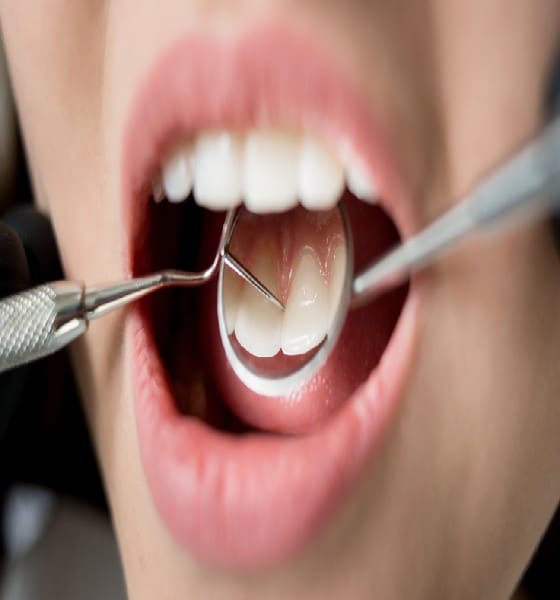
What Is Gum Disease?
Gingivitis is actually very common in adults. It is the mildest form of gum disease and involves slight inflammation of the supporting tissues surrounding the teeth. In mild cases of gingivitis, most people are completely unaware they have it. However, if gingivitis is left untreated, it can rapidly progress to more advanced stages of periodontal disease, causing many other problems in the mouth. In this case, treating advanced gum disease can become more complicated.
Healthy gums hug the teeth tightly to protect the roots and the nerves from being exposed. Advanced gum disease weakens and destroys this gum tissue, leaving the roots and nerves vulnerable. In addition, diseased gum tissue does not provide enough support for the teeth. This is why advanced stages of gingivitis can sometimes result in loose teeth or the complete loss of a tooth/teeth.
Frequently Asked Questions
Gum-disease-treatment
Can Gum Disease Go Away On Its Own?
It’s almost impossible to get rid of all the bacteria at once, and all the deep pockets within your gums can still collect more plaque. It is extremely important to stay on a routine of regular maintenance to keep gum disease under control, in addition to attending your regular dental visits. During your regular dental visits, we ensure that no gum disease is detected. If it is in fact detected upon evaluation, we begin to treat our patients to reverse their gum disease in the respective ways that are best for them and their specific dental case.
How Do You Treat Gum Disease?
There are several steps to treating gum disease. Treatments include but are not limited to improved dental hygiene, professional deep cleaning of the pockets around teeth, and in advanced cases, surgery. Deep cleaning of gum pockets serves to prevent damage to the surrounding bone. For more severe cases, periodontal surgery serves to correct anatomical, traumatic, developmental, or plaque-induced defects in the bone, gingiva, or alveolar mucosa.
Signs Of Gum Disease
Oftentimes, gum disease is hard to detect in its earliest stages. Symptoms tend to appear when the disease progresses to a more advanced stage. Some symptoms are minor and may not be alarming, while some can cause major concern and indicate a serious issue. Common symptoms of gum disease include:
- Swollen, red, and inflamed gums
- Bleeding while brushing, flossing, or eating certain foods
- Loose or shifting teeth
- Gums that are receding or pulling away from the surface of the tooth, making teeth appear longer
- Constant bad breath
- Visible pus that forms between the gums and teeth
What Happens When Gum Disease Worsens?
Bleeding gums are a sign of gum disease at all stages, but if the bleeding continues or gets worse, it is a sign that your gum disease is progressing.. The bleeding typically happens when you floss or brush your teeth, but it could also happen when you eat. Pay close attention to discomfort when brushing or eating, and/or excessive bleeding.
Which Option Is Best For Me?
As professionals, we encourage you to come in for a full evaluation in order for us to determine which option is best to reverse or improve your dental disease. Each patient has a unique dental case and situation. In order to provide you with the most effective, long-lasting treatment, an evaluation is highly recommended!

Request A Consultation Today
Our team of experienced cosmetic dentists is here to help you determine the best treatment plan for curing your gum disease. Don’t hesitate to fix those bleeding gums, your gummy smile, or to find out more about our deals on teeth cleaning. Call our top-rated New York City dentists at (877)858-1624 or fill out this form to book your free periodontal consultation.
Schedule an Appointment
